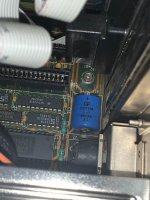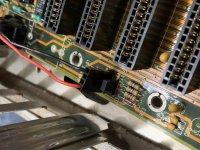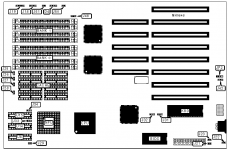Zap!
Experienced Member
So I got a 386DX 33 last year, and at the time it had an old barrel battery in it (see pic 1). Well, I removed it and installed a nice battery pack (uses 3 AAA batteries) to jumper J2 (see pic2). It worked great, and all was well for over a year, but then I had to open up the computer case for something. When I powered the computer back on, it stopped holding a charge. So I replaced the batteries. Nothing. I made sure the battery pack switch was "On" (it was). I cleaned the terminals that the positive and negative go to. Still nothing. When I power on, it says "CMOS battery state low."
What do you think it could be? It's weird because it worked perfectly before, until I had to open the case. I don't think I could have hit something. Battery pack looks like this, except the leads are female. Anyway, here is my motherboard:
https://stason.org/TULARC/pc/motherb...386-MB-35.html


What do you think it could be? It's weird because it worked perfectly before, until I had to open the case. I don't think I could have hit something. Battery pack looks like this, except the leads are female. Anyway, here is my motherboard:
https://stason.org/TULARC/pc/motherb...386-MB-35.html




